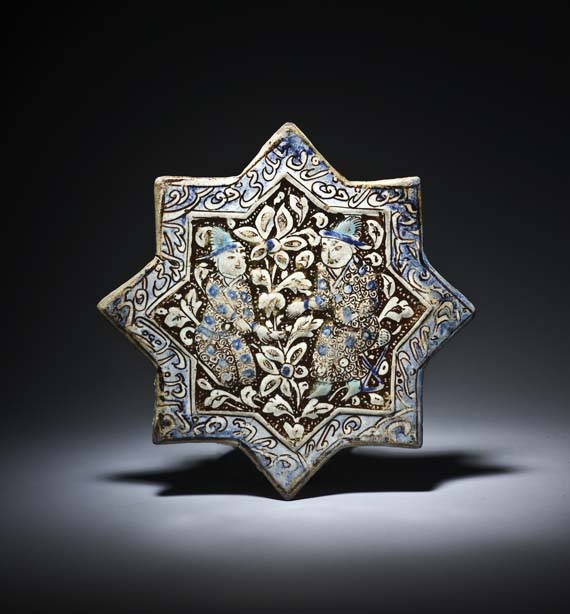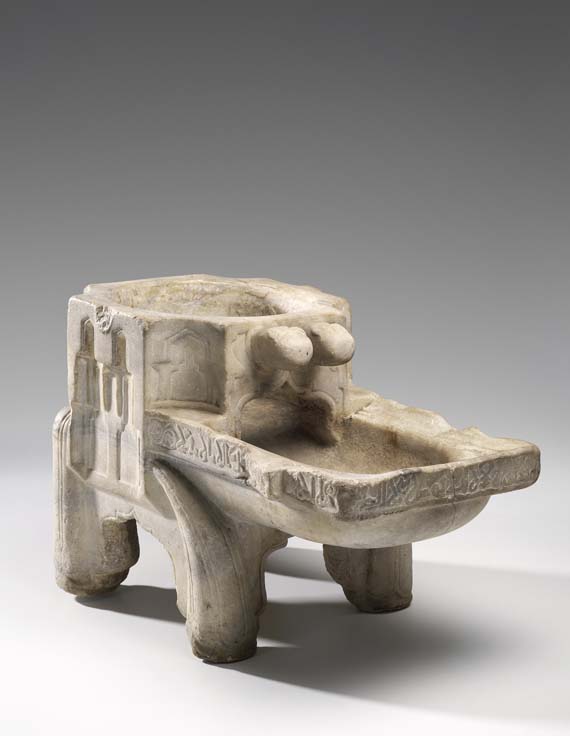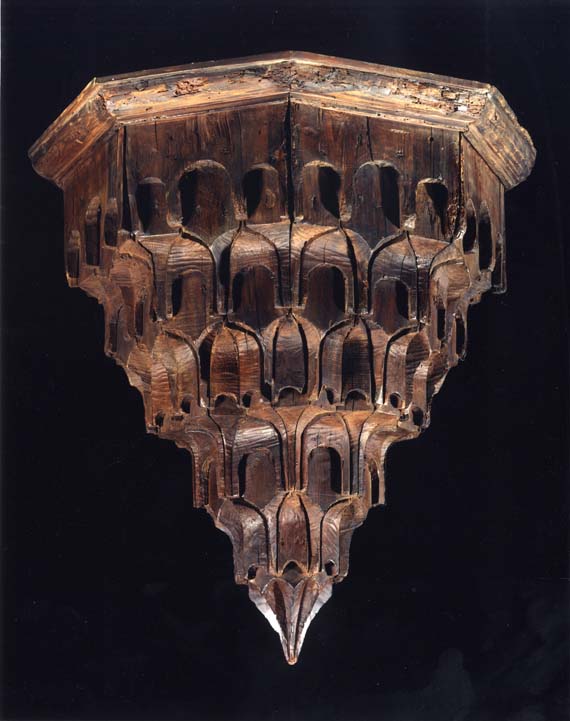
Treasures of the Aga Khan Museum: Architecture in Islamic Arts
Mar 09, 2012 Exhibition
Currently running at the prestigious State Hermitage Museum, in St Petersburg, Russia, the exhibition at The Islamic Arts Museum Malaysia will mark the first time that the collection will be displayed in Southeast Asia. It will run from 30th March to June 2012. The exhibition focuses on Islamic architecture as manifested in art. Featuring around 100 selected masterpieces, the display includes miniatures and oil on canvas paintings depicting magnificent structures; decorative media, such as tiles and woodwork, which formed the visual ambience of the interior of architectural units; as well as objects of art that were constructed for use within these edifices. An exhibition not to be missed!
 "Salm and TÅ«r Receive the Reply of FarÄ«dÅ«n and ManÅ«chihr" / Folio 53v; manuscript of the ShÄhnÄma of FirdawsÄ« created for ShÄh TahmÄsp Tabriz, Iran; c. 1522-1535 AD; Opaque watercolour, ink, gold and silver on paper; AKM 495
© Aga Khan Trust for Culture
"Salm and TÅ«r Receive the Reply of FarÄ«dÅ«n and ManÅ«chihr" / Folio 53v; manuscript of the ShÄhnÄma of FirdawsÄ« created for ShÄh TahmÄsp Tabriz, Iran; c. 1522-1535 AD; Opaque watercolour, ink, gold and silver on paper; AKM 495
© Aga Khan Trust for Culture
Among the most notable artefacts on exhibit are: a 16th century folio from the most famous series of painting in Muslim art, the celebrated Shahnama of Shah Tahmasp; architectural elements like muqarnas and ornamented wood pieces from 15th century Spain; glazed turquoise earthenware elements from late 14th century Central Asia; tiled arches from 15th century Egypt; ornamental doors from 9th century Iran and 16th century Iznik tiles from Turkey.Architecture is one of the most visible manifestations of Islamic art. It has flourished across the Islamic world for over 1,400 years. Majestic domes, peaceful courtyards and towering minarets not only punctuate the landscape with their grandeur, but also serve as a unifying element in Islamic art and heritage. In recognition of the importance of architecture to the artistic traditions of the Islamic world, The Islamic Arts Museum Malaysia is proud to host the travelling exhibition “Treasures of the Aga Khan Museum: Architecture in Islamic Arts.â€
In order to showcase the masterpieces to their best advantage, the exhibition is divided into six sections. The first section, “Sacred Topographies,†explores the sites and monuments of Islamic pilgrimage through paintings and drawings. This is followed by “Religious and Funerary Architectureâ€, which examines mosques and commemorative shrines. The third section, “The Fortress and the City,†encompasses forts and fortified towns, while the fourth section, “The Palace,†looks at the residences of royal families. The penultimate section, “Gardens, Pavilions and Tents,†discusses the arts of shelter, and the exhibition concludes with “Architecture and the Written Wordâ€, which focuses on architectural spaces contained in miniature painting.
 Candlestick with Repouseé Designs / Khurasan (north-eastern Iran/Afghanistan), possibly Herat, late 12th or 13th century; Chased and beaten brass.
©Aga Khan Trust for Culture
Candlestick with Repouseé Designs / Khurasan (north-eastern Iran/Afghanistan), possibly Herat, late 12th or 13th century; Chased and beaten brass.
©Aga Khan Trust for Culture
 Tile / Posssibly from Kashan, Iran, Late 13th or early 14th century tile.
©Aga Khan Trust for Culture
Tile / Posssibly from Kashan, Iran, Late 13th or early 14th century tile.
©Aga Khan Trust for Culture
Other than providing an in-depth focus on Islamic architecture, the exhibition is also designed to bridge cultures and understanding and inspire audiences from all faiths and backgrounds. The exhibition offer insights and new perspectives into Islamic civilisations, with the aim of fostering knowledge and understanding both within Muslim societies and between these societies and other cultures.
The exhibition at the Islamic Arts Museum Malaysia is a rare opportunity to view this exemplary collection up close, as it will later go on permanent display next year at the Aga Khan Museum in Toronto, Canada, which is due to open in 2013. The Museum collection contains over one thousand artefacts and artworks and spans over one thousand years of history. The objects – in ceramic, metalwork, ivory, stone and wood, textile and carpet, glass and rock crystal objects, parchment and illustrated paintings on paper – present an overview of the artistic accomplishments of Muslim civilisations from the Iberian Peninsula to China.
 Kilga (Jar Stand) / Egypt (probably Cairo), possibly 12th century; Carved marble
©Aga Khan Trust for Culture
Kilga (Jar Stand) / Egypt (probably Cairo), possibly 12th century; Carved marble
©Aga Khan Trust for Culture
 Muqarnas element / Islamic Spain, late 15th or 16th century; Carved wood
©Aga Khan Trust for Culture
Muqarnas element / Islamic Spain, late 15th or 16th century; Carved wood
©Aga Khan Trust for Culture
Accompanying the exhibition is an impressive catalogue that features essays by renowned scholars such as: Nasser Rabbat, David J. Roxburgh, Kishwar Rizvi, Renata Holod, Sussan Barbaie, James L. Wescoat, Jr. and Margaret S. Graves. The exhibition will be on display in Special Gallery 2 at the Islamic Arts Museum Malaysia from 30th March – 29th June 2012.
The Islamic Arts Museum Malaysia is a non-profit organisation dedicated to being a custodian, preserver and educator of Islamic art. It is located at Jalan Lembah Perdana, 50480 Kuala Lumpur, neighbouring the National Mosque and Islamic Centre. It is within walking distance of the National Museum, National Planetarium, Orchid Garden, Butterfly Park and Bird Park. Opening hours are from 10.00 am to 6.00 pm, seven days a week. The 12 permanent galleries in the museum comprise: Architecture, Qur’ans & Manuscripts, India, China, Malay World, Textiles, Jewellery, Arms & Armour, Coins & Seals, Metalwork, Ceramics & Glass, and Living with Wood.
The Museum is one of the institutions of the Aga Khan Trust for Culture (an agency of the Aga Khan Development Network). The Network’s institutions work to improve living conditions and opportunities in 30 countries in the developing world. They have mandates that range from the fields of health and education to rural development and the promotion of private-sector enterprise. The three main areas of activity in the Network are social development, economic development and culture. Through education and cultural initiatives in music and the arts the Aga Khan Trust for Culture aims to highlight the contributions of the Muslim world to global cultural heritage. It also implements programmes aimed at the physical and social revitalisation of communities with the aim of improving the quality of life and, through its architectural programmes, promotes debate about contemporary design problems.
Comments
Add a comment